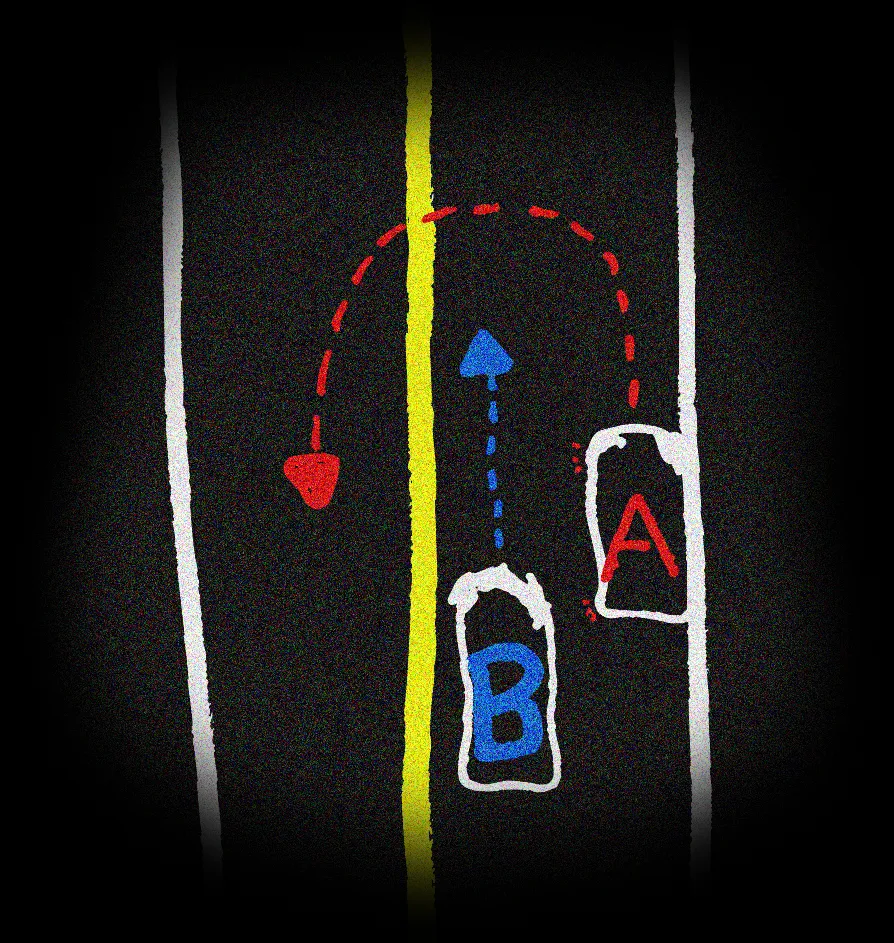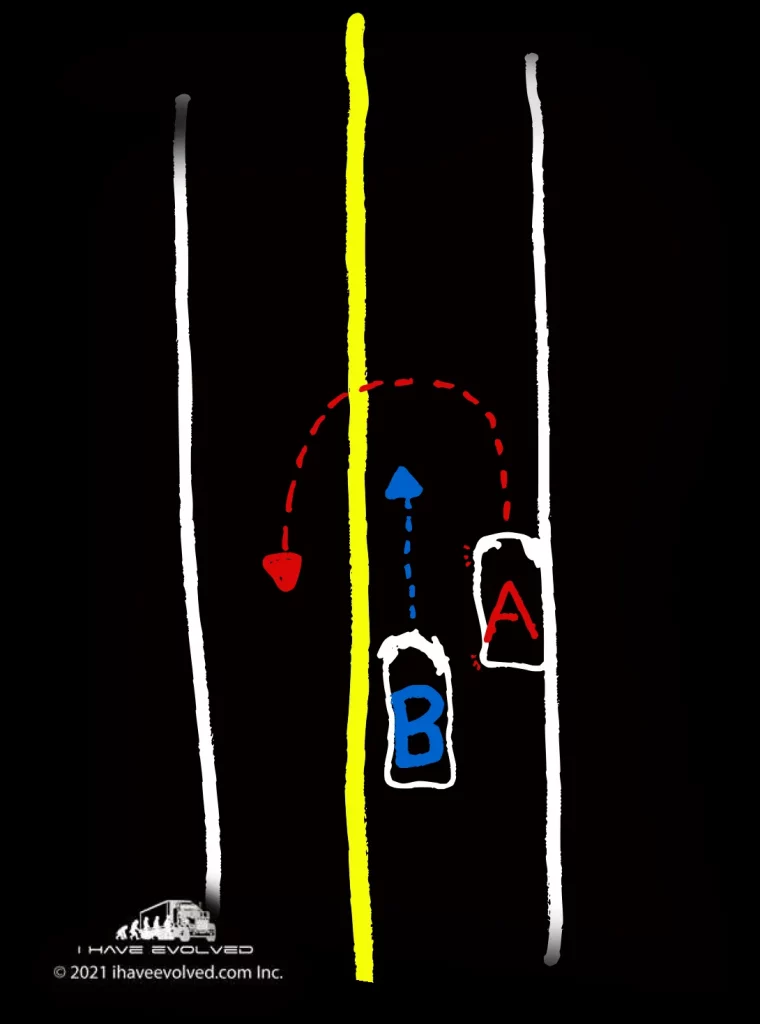- 19 OPENING VEHICLE DOOR IN TRAFFIC
- 18
- 17 PARKING LOT MAIN LANE VERSUS FEEDER LANE
- 16 CRASH EXITING PARKING LOT OR DRIVEWAY
- 15 LEFT TURN CRASH ONCOMING PASSING CAR
- 14 LEFT TURN VEHICLE PASSING ON YOUR LEFT
- 13 CRASH MAKING LEFT AT INTERSECTION, VEHICLE PASSING
- 12 COMMERCIAL VEHICLE MAKING WIDE RIGHT TURN
- 11 VEHICLE MAKING RIGHT TURN WIDE
- 10 REVERSE TURN (UTURN) CRASH
- 09 LEFT TURN CRASH WITH CURB LANE TRAFFIC
- 08 LEFT TURN CRASH WITH ONCOMING TRAFFIC
- 07 HIGHWAY MERGE CRASH
- 06 CRASH BOTH VEHICLES CHANGING LANES
- 05 CRASH WHILE CHANGING LANES
- 04 WHEN A VEHICLE CROSSES CENTER LINE
- 03 STATIONARY VEHICLE CRASH
- 02 REAR END CRASH TWO CARS
- 01 READ ENDER
Reverse turn
168 Except as provided by the bylaws of a municipality or the laws of a treaty first nation, the Nisg̱a’a Nation or a Nisg̱a’a Village, a driver must not turn a vehicle so as to proceed in the opposite direction
(a)unless the driver can do so without interfering with other traffic, or,
(ii)on an approach to or near the crest of a grade where the vehicle cannot be seen by the driver of another vehicle approaching from either direction within 150 m,
(iii)at a place where a sign prohibits making a U-turn,
(iv)at an intersection where a traffic control signal has been erected, or
(v)in a business district, except at an intersection where no traffic control signal has been erected.






Comments are closed